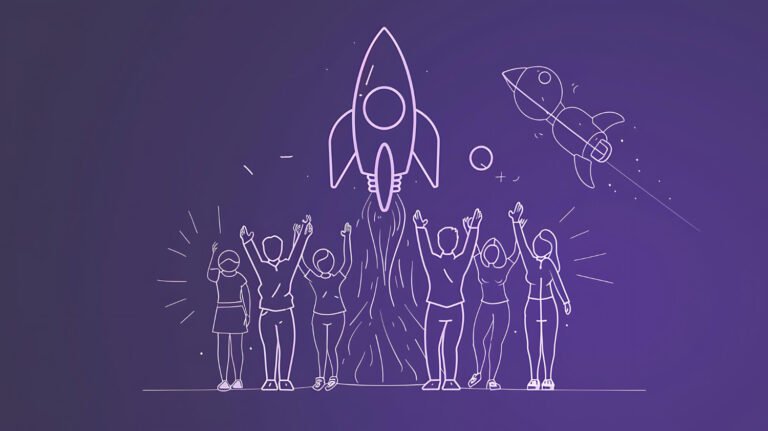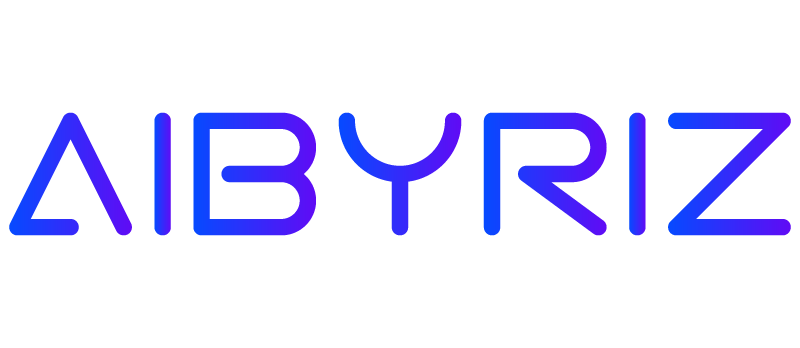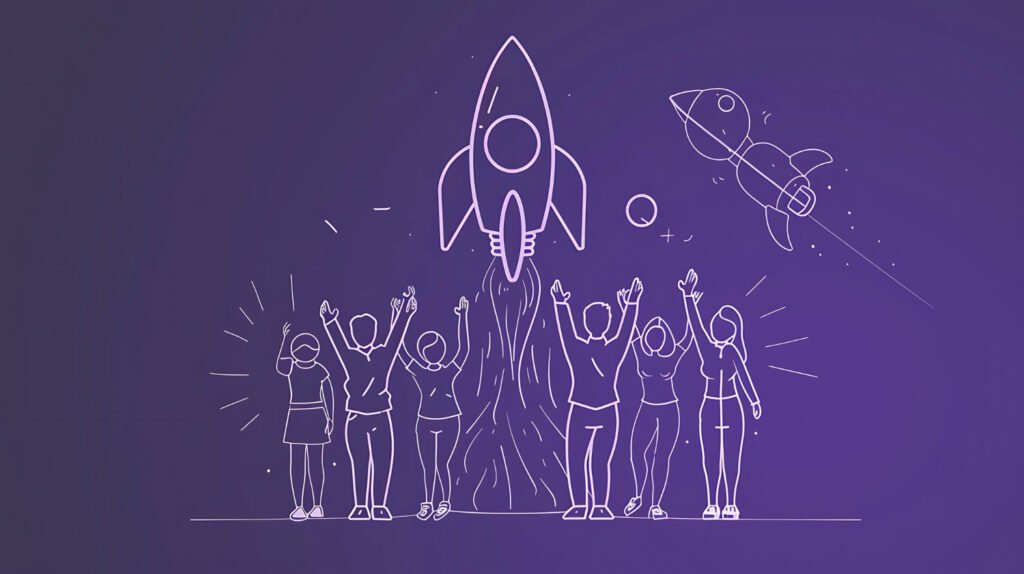Immediate feedback is a vital factor in successful team management. Studies reveal that organisations using continuous feedback systems see 34% higher employee participation rates. AI makes this process quicker and helps teams get useful insights that improve performance. These AI-enhanced feedback systems create opportunities for continuous growth that traditional annual reviews don’t deal very well with.
Teams now have access to smart feedback systems that combine analytical insights with tailored coaching opportunities. Modern AI platforms provide flexible solutions for performance management, employee engagement, and team collaboration challenges. This piece explains how organisations can implement these tools, maximise their potential through proper integration, and handle privacy and ethical concerns about AI in feedback processes.
Understanding AI-Powered Real-Time Feedback Systems
Artificial Intelligence reshapes the scene of team feedback with sophisticated systems that provide evidence-based insights continuously. These AI-powered feedback mechanisms mark a most important step forward in the way organisations monitor, analyse, and boost team performance.
Definition and key components
An AI-powered immediate feedback system works as a continuous cycle where artificial intelligence learns and improves by analysing team interactions and performance data 1. These systems consist of several essential components:
- Natural Language Processing (NLP) for understanding communication
- Sentiment analysis for gauging team morale
- Predictive analytics for identifying trends
- Machine learning algorithms for tailored insights
- Data visualisation tools for useful reporting
Benefits for team performance and participation
AI-driven feedback systems have shown significant improvements in organisational performance. Companies that use these systems report a 30% increase in employee satisfaction scores 2. The employee attrition rates have dropped by 15% 2.
Live feedback mechanisms create a responsive work environment. Organisations that use these systems experience:
- Higher employee motivation through quick recognition
- Better skill development with customised coaching
- Effective team collaboration and communication
- Clear performance evaluation
- Better connection between individual and company goals
Comparison with traditional feedback methods
Traditional annual reviews no longer meet the needs of today’s ever-changing work environment. Research shows that 28% of employees find traditional feedback too infrequent to make improvements 3. AI-powered systems now offer a continuous and objective assessment that solves many problems of conventional methods.
Live feedback works well with distributed or remote teams and helps curb team members’ feelings of disconnect 3. Managers can now see team dynamics instantly and address concerns right away instead of waiting for scheduled reviews.
Data-Driven Decision Making AI feedback systems excel at processing so big amounts of data to generate useful insights. These systems analyse performance metrics in multiple areas like productivity, collaboration, and state-of-the-art ideas 4. This detailed approach bases feedback on objective data rather than personal opinions which leads to fair and accurate assessments.
Personalization and Adaptability Modern AI-powered platforms customise feedback based on each person’s learning style and career goals. Companies using these individual-specific approaches have seen a 15% boost in employee satisfaction 2. This shows how AI creates more engaging and meaningful feedback experiences.
Implementing AI for Continuous Team Insights
Organisations need to think carefully about tool selection, data management, and integration strategies to implement AI-powered feedback systems effectively. Companies that implemented these systems wisely saw their employee participation metrics improve by up to 30% 5.
Selecting the right AI tools and platforms
The right AI tools that match your organisation’s needs will help you implement AI effectively. Your team should think over these key criteria while evaluating AI feedback solutions:
- Strong API integration capabilities that connect workflows smoothly
- Transparent processes that verify and validate outputs
- Reliable data protection that complies with GDPR and CCPA standards
- Accessible interface that teams can adopt quickly
- Detailed documentation and support systems
Research indicates that teams achieve 25% higher employee adoption rates when they prioritise integration capabilities in their AI tool selection 6.
Data collection and analysis processes
Quality data collection and analysis form the core of AI-powered feedback systems. Organisations that implement these systems have cut their manual feedback processing time by 40% 7. The process includes:
- Establishing clear data collection parameters
- Implementing automated analysis workflows
- Setting up continuous monitoring systems
- Creating feedback verification protocols
- Developing response mechanisms
Live Analysis Capabilities AI systems process huge amounts of feedback data efficiently. Some platforms can analyse thousands of interactions at once 8. Organisations can spot patterns and trends that traditional feedback systems might miss.
Integrating AI feedback into existing workflows
AI implementation’s success depends on how naturally it fits with current work processes. Companies should start small and gradually expand their AI deployments 8. This strategy has helped boost successful adoption rates by up to 45% 9.
Best Practises for Integration A successful integration needs both technical excellence and human touch. Companies that give their staff detailed training on AI tools experience a 35% increase in tool usage 10. Here’s what matters most:
- Data must flow smoothly between systems
- Team members need training on new tools
- Clear feedback loops must exist
- Users need proper support systems
- Systems need regular performance checks
The integration should keep workflows running smoothly while new features roll out gradually. Companies that stick to this approach get their teams to adopt new AI tools 40% faster 11.
Leveraging AI-Generated Insights for Team Improvement
AI-powered analytics helps modern organisations develop their teams better. Studies show that companies using AI in their collaboration tools see a 50% boost in team productivity 12. This significant change affects how leaders understand and improve team performance.
Identifying performance trends and patterns
AI systems excel at discovering hidden patterns in team dynamics that humans might miss. These sophisticated algorithms analyse large amounts of employee data. The analysis includes skills, experience, personality traits, and communication styles that give new insights into team performance 13. Organisations that use AI-driven analytics report these tools can:
- Predict potential project outcomes
- Identify optimal team compositions
- Flag performance issues proactively
- Analyse communication patterns
- Monitor team engagement levels
Research shows that 85% of organisations now use machine learning to improve their decision-making and performance outcomes 14. Leaders can make better strategic decisions with this informed approach while keeping their focus on human-centred team development.
Customised coaching and development opportunities
AI-powered coaching has transformed personal development across individual, leadership, and organisational levels 15. These systems offer timely and customised suggestions based on performance data and involvement scores 16.
AI coaching platforms utilise advanced analytics to create targeted development plans that address specific skill gaps. The platforms provide instant contextual feedback and track progress to adjust their recommendations. They also connect users with relevant learning resources and help identify future challenges and opportunities for growth.
Companies that use AI-powered coaching see better employee satisfaction and involvement 13. Leaders can concentrate on strategic initiatives instead of administrative work, which saves them valuable time.
Addressing team dynamics and collaboration issues
AI plays a sophisticated role that helps teams work better together. It analyses team dynamics and predicts conflicts before they surface 17. These systems evaluate how different personalities and work styles interact, which leads to better team compositions and teamwork 13.
Enhanced Decision-Making AI-powered tools analyse extensive employee feedback to learn about team morale and spot areas that need improvement 13. Leaders can make informed decisions about team structure and support needs through this vital feedback loop.
Continuous Improvement Teams that integrate AI into their workflows see remarkable results that promote ongoing growth. Organisations report that AI-generated recommendations lead to better team morale, stronger relationships, and improved work output 16. These systems help team members find common ground and build consensus 17. The feedback remains constructive and practical throughout the process.
Organisations create more inclusive and simpler work environments by utilising AI’s capabilities in natural language processing and predictive analytics. The technology acts as an objective third party that provides unbiased insights. Teams can identify and tackle collaboration challenges before they become problems.
Overcoming Challenges and Ethical Considerations
AI-powered feedback systems show great promise, but organisations face major challenges to implement them responsibly and effectively. A recent study reveals that 88% of respondents prefer human interaction in feedback processes 18. This statistic emphasises the need to strike the right balance between technological advances and personal connection.
Ensuring data privacy and security
Data protection has become paramount in today’s digital world. Studies show that AI systems need reliable security measures when they process large amounts of personal data 19. Organisations should implement detailed security protocols that include:
- Data masking and anonymization techniques
- Strong encryption protocols
- Access control mechanisms
- Regular security audits
- Compliance monitoring tools
Companies that implement proper data protection measures see a 15% decrease in security breaches 19. Clear AI policies must outline permitted uses and restrictions, especially when companies have lost sensitive IP through AI tools 20.
Mitigating algorithmic bias
Algorithmic bias needs our immediate focus since studies show that biased AI systems create unfair treatment and discrimination 21. Organisations can tackle this challenge by being systematic:
- Use diverse and inclusive training datasets
- Perform regular bias audits
- Create clear accountability frameworks
- Test multiple models
- Keep decision-making processes transparent
Research shows that companies who regularly audit their algorithms see 35% better fairness metrics in their AI systems 22. Bias mitigation needs constant watchfulness and advanced technical solutions, especially when you have HR processes where AI-driven decisions can substantially shape careers.
Balancing AI insights with human judgement
The right balance between AI capabilities and human oversight plays a significant role in successful feedback systems. Studies show that hybrid models yield higher employee experience scores when AI supports rather than replaces human managers 23.
Organisations should acknowledge that AI can detect performance issues, while human managers grasp the contextual circumstances behind performance changes 24. This knowledge has led experts to develop “Augmented Intelligence” – a system where AI improves rather than replaces human decision-making.
Key Implementation Strategies:
- Establish clear governance frameworks for AI usage
- Implement regular human audits of AI suggestions
- Create appeal mechanisms for AI-generated decisions
- Maintain transparency in AI decision-making processes
- Provide complete training for managers
Organisations that implement these balanced approaches see a 40% improvement in feedback effectiveness 23. Success comes from using AI’s analytical capabilities while preserving the irreplaceable human elements of empathy and contextual understanding.
The ethical implications of AI-driven feedback systems need careful evaluation. Research shows that excessive AI monitoring leads to employee anxiety and decreased retention rates 23. Organisations should build transparent processes that enable rather than surveil their teams.
A reliable AI governance framework makes a difference, as studies reveal organisations with clear AI policies face 30% fewer ethical incidents 22. This governance should include regular audits, impact assessments, and oversight committees that review AI systems for potential biases and privacy concerns.
What This Means for You
AI-powered feedback systems have shown amazing potential to boost team performance. Teams participate more actively through informed coaching that happens continuously. Companies using these systems see better results in many areas – from higher satisfaction scores to lower turnover rates. Teams can grow and adapt better than ever before because they combine sophisticated analytics, customised coaching, and live performance tracking.
These systems work best when companies implement them thoughtfully. The key is to balance AI-driven insights with human judgement. Strong data privacy measures and bias controls help companies grow sustainably. Teams that have these powerful tools can tackle future workplace challenges head-on. They benefit from better teamwork, deeper understanding, and stronger connections at every organisational level.
FAQs
How does AI deliver instant feedback?
AI utilises advanced techniques such as sentiment analysis, text analysis, and emotion detection to draw valuable insights from feedback data. This enables businesses to continuously improve and increase customer satisfaction by acting on these insights in real-time.
What are the primary ways to utilise artificial intelligence in business?
Artificial intelligence can be leveraged in several key areas within a business, including:
- Conducting data analysis for predictive sales forecasting.
- Automating repetitive administrative tasks.
- Enhancing customer service to boost customer lifetime value.
- Upgrading corporate marketing efforts.
- Strengthening cybersecurity and improving fraud detection.
How can AI be used to enhance customer service?
AI can transform customer service by:
- Employing AI agents for direct customer interaction.
- Providing proactive guidance to service agents.
- Automating routine workflows.
- Optimising workforce management.
- Elevating the quality of service.
- Enhancing call management.
- Improving the functionality of help centres.
- Transforming cost centres into revenue generators.
What are three ways to use AI in marketing to enhance the consumer experience?
To improve consumer experiences through AI in marketing, consider:
- Experimenting with emerging technologies.
- Automating communication with potential customers.
- Implementing personalised chatbots.
- Monitoring social media sentiment.
- Adopting predictive customer service strategies.
References
[1] – https://www.zonkafeedback.com/blog/ai-feedback-loop
[2] – https://psico-smart.com/en/blogs/blog-how-does-ai-integration-in-employee-engagement-platforms-improve-feedback-and-communication-142917
[3] – https://workleap.com/blog/real-time-feedback/
[4] – https://www.inma.org/blogs/media-leaders/post.cfm/at-times-group-ai-offers-real-time-employee-feedback-but-human-touch-is-essential
[5] – https://marketlogicsoftware.com/blog/how-to-choose-the-right-ai-solution-for-insights-driven-business-decisions/
[6] – https://www.brightmine.com/uk/resources/blogs/22-hr-ai-tools-every-hr-team-should-consider/
[7] – https://www.avadolearning.com/blog/ai-for-performance-management-system/
[8] – https://stackoverflow.blog/2023/10/12/integrating-ai-tools-into-your-workflow/
[9] – https://thecsce.com/resources/how-to-integrate-ai-tools-into-your-communication-workflow/
[10] – https://www.mara-solutions.com/post/mastering-ai-review-replies-6-best-practises-you-need-to-know
[11] – https://dialzara.com/blog/7-best-practises-for-ai-customer-feedback-analysis/
[12] – https://psico-smart.com/en/blogs/blog-leveraging-artificial-intelligence-for-enhanced-team-collaboration-and-performance-168274
[13] – https://www.shrm.org/topics-tools/news/technology/using-ai-to-build-better-teams
[14] – https://psicosmart.net/blogs/blog-using-ai-and-machine-learning-to-analyse-performance-in-multidisciplinary-teams-trends-and-future-directions-201195
[15] – https://www.rocky.ai/
[16] – https://bonfyreapp.com/blog/how-to-implement-ai-powered-coaching-into-your-workforce
[17] – https://www.affinaod.com/article/understanding-the-impact-of-ai-on-team-effectiveness/
[18] – https://www.nicereply.com/blog/ai-in-customer-service/
[19] – https://fellow.app/blog/productivity/ai-and-privacy/
[20] – https://rie.solutions/stay-secure-how-to-engage-with-ai-tools-safely/
[21] – https://www.holisticai.com/blog/mitigate-bias-ai-systems-governance
[22] – https://www.linkedin.com/pulse/ethical-considerations-responsible-use-generative-ai-workplace-6otdc
[23] – https://www.linkedin.com/pulse/potential-drawbacks-using-ai-feedback-evaluation-ukqwf
[24] – https://learn.g2.com/ai-in-performance-reviews














